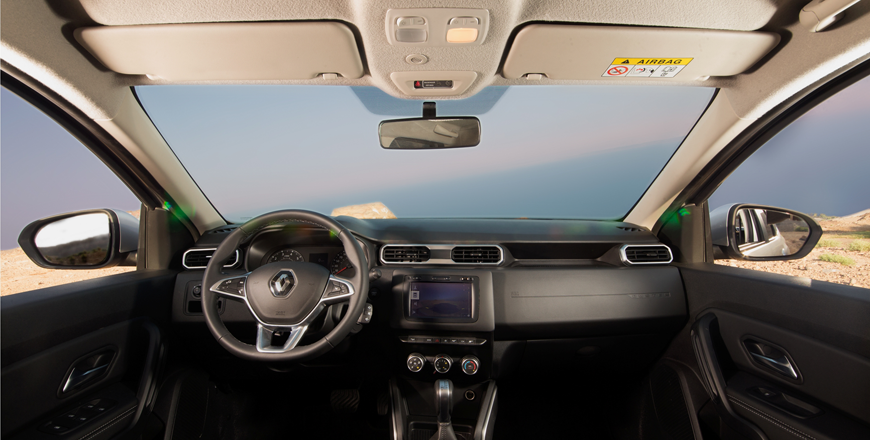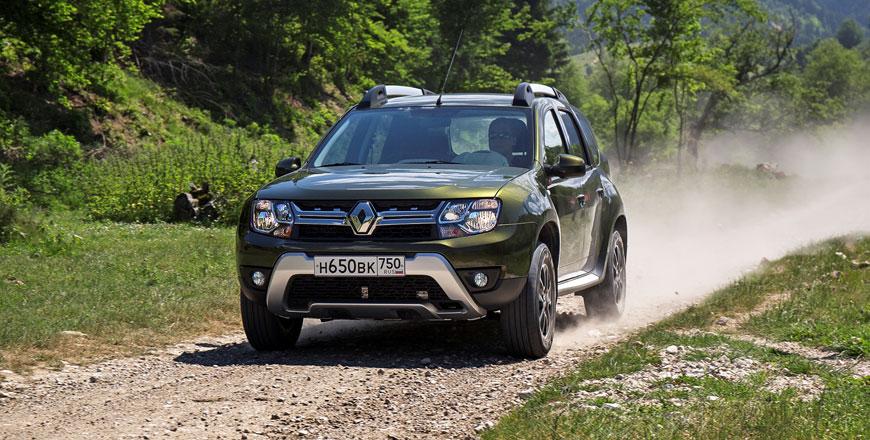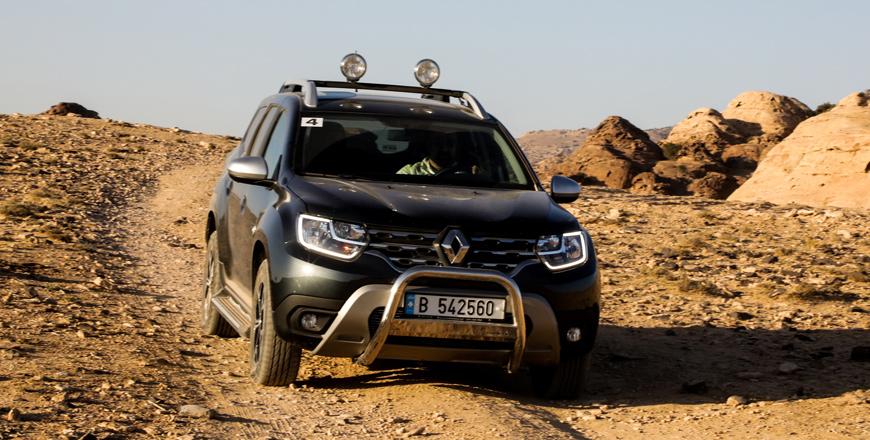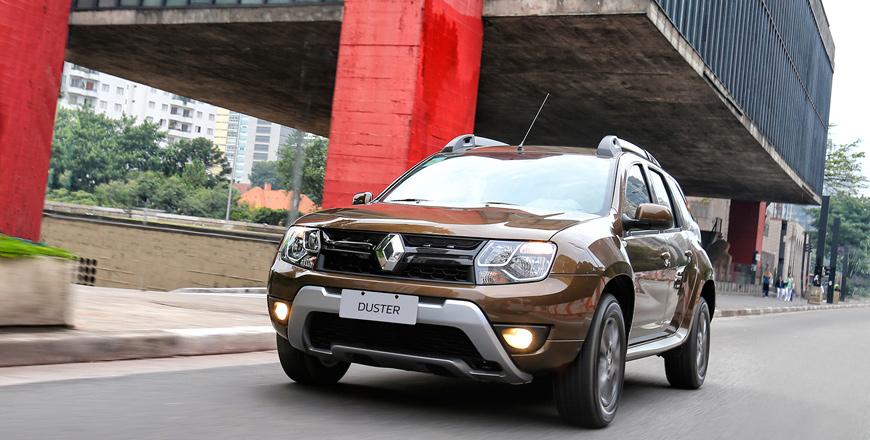You are here
Renault Duster 1.6L: Dusting off a popular recipe
By Ghaith Madadha - Sep 19,2022 - Last updated at Sep 19,2022

Photos courtesy of Renault
Hardly the first affordable and compact yet capable SUV, the Renault Duster nevertheless proved hugely popular in world markets, since it first launched in 2010 under the Dacia brand, with 2.45-million first generation models sold.
Sold in Middle East markets under the Renault group’s French parent brand, the Duster bridged the gap between ruggedly dedicated small SUVs like the Lada Niva and Suzuki Jimny at one end, and both tough high-riding small saloons and more fashionable car-like crossovers at the other end of the market.
Fresh and refined
Succeeded by a fresher and more refined second generation model in 2018, the Duster continues to be offered in either 2-litre 4x4 or 1.6-litre front-drive variants, with the former more obviously leaning into the small SUV market, while the latter is conceptually closer to the style-led crossover market. That said, the Duster offer plenty by way of practicality, space, comfort and value for money, with even the front-drive version delivers surprisingly good — albeit limited — light off-road ability that exceeds most crossover drivers’ needs and expectations.
An attainable, economical, practical and popular small SUV in both developing and developed markets, the first generation Duster accounted for 20 per cent of Renault’s Middle East sales and 25 per cent of Dacia’s global sales. Built on same basic mechanicals and platform, the second generation Duster retains the original’s character, utility and “just right” engineering approach. Fresher, more flowing, better aesthetically integrated and more assertive, the second generation Duster’s fresher design comes in tandem with improved driving dynamics, tech upgrades and a more refined cabin makeover.

Economical and evolutionary
Compact and economical but comfortable and spacious for daily family motoring, the thoughtfully well-designed new Duster improves on its predecessor’s recipe. Similarly sized yet aesthetically evolutionary, it features slimmer headlights with a sharper signature, more dynamic grille design and more liberal use of up-market chrome elements. More ruggedly flavoured with its higher waistline, more rakishly angled A-pillars and better defined wheel-arches and surfacing, it also incorporates better integrated roof rails, new alloy wheels, more prominent rear skid plate and sportingly stylish square crosshair rear lights.
Offered in either range-topping 133BHP 2-litre or entry-level 1.6-litre front-drive version, the significantly lighter latter variant’s familiar engine develops 113BHP at 5,500rpm and 115lb/ft torque at 4,000rpm. A tried and true engine, the Duster’s natuaral1y-aspirated 1.6-litre four-cylinder engine can, however, hardly be described as powerful. It is nevertheless progressive in delivery, refined and provides adequate response and versatility, as mated to a continuously variable transmission (CVT) system with its fine-ratio alterations, which well-exploit available output for efficiency, and performance when driven with a heavy right foot.
Smooth and tidy
Carrying its sub-1,300kg mass through the 0-100km/h benchmark in 13.2-seconds and onto a 161km/h maximum, the Duster returns comparatively frugal 6.9l/100km combined cycle fuel efficiency. If more engaging with a traditional manual gearbox as its predecessor, the new entry-level Duster’s CVT’s broader ratio range allows for better on the move flexibility. However, one still needs to carefully time overtaking manoeuvres, especially on steep inclines, where more power would be welcome. The Duster’s smooth CVT can meanwhile mimic a traditional gearbox, with six pre-set manual mode ratios.
Well able to accommodate more power than available, the Duster is adept through winding roads, even with the front-drive model’s less sophisticated torsion beam suspension, in lieu of the 4x4 version’s multilink design. Tidy turning into corners with its quicker, more accurate and 35 per cent lighter new electric-assisted steering, the Duster’s driving dynamics are not too unlike a family hatchback, albeit longer and not quite as nimble. That said, the new Duster is agile and eager, for an SUV, especially when turning in sharp and early.
Comfortably capable
Reassuringly grippy at the rear, the new Duster however seems slightly better balanced and agile, with less understeer bias. Well-absorbing all but the sharpest bumps and potholes, it fluently dispatches most imperfections in its stride. If not as capable as its 4x4 sister, the nimble and manoeuvrable front-drive Duster nevertheless avails itself surprisingly well on moderately demanding pebbly, loose, narrow and winding off-road routes. Comfortably pliant with 215/65R16 tyres, it also benefits from generous 210mm ground clearance, and 21° approach, 30° break-over and 34° departure angles.
Comfortable, refined and settled over imperfections, the Duster is stable at speed, and well-refined from noise, vibration and harshness. Ergonomically and aesthetically improved, it provides a better driving position, seat cushioning and lateral support, and seat height and steering adjustability. Spacious in front and rear, the Duster accommodates 478-litres of cargo, which expands to 1623-litres when split rear seats are folded. Airy inside with good visibility and improved equipment levels, it features rear parking sensors, electronic hill descent assistance, all-round three-point seatbelts, Isofix child seat latches and more.
TECHNICAL SPECIFICATIONS
- Engine: 1.6-litre, transverse 4-cylinders
- Valve-train: 16-valve, DOHC
- Bore x stroke: 78 x 83.6mm
- Gearbox: Continually variable transmission (CVT), front-wheel-drive
- Power, BHP (PS) [kW]: 113 (115) [84] @5,500rpm
- Specific power: 71BHP/litre
- Torque, lb/ft (Nm): 115 (156) @4,000rpm
- Specific torque: 97.6Nm/litre
- 0-100km/h: 13.2-seconds
- Top speed: 161km/h
- Fuel consumption, extra-urban/urban/combined: 5.8-/8.8-/
- 6.9-litres/100km
- CO2 emissions, combined: 160g/km
- Fuel capacity: 50-litres
- Length: 4,341mm
- Width: 1,804mm
- Height: 1,693mm
- Wheelbase: 2,674mm
- Overhang, F/R: 842/826mm
- Ground clearance: 210mm
- Approach/break-over/departure angles: 21°/30° /34°
- Wading depth: 350mm
- Cargo volume, min/max: 467-/1623-litres
- Cabin width, F/R: 1,403/1,416mm
- Kerb weight: 1,235-1,294kg
- Suspension, F/R: MacPherson struts, anti-roll bar/torsion beam, coil springs
- Steering: Electric-assisted rack and pinion
- Turning circle: 10.14-metres
- Brakes, F/R: Ventilated discs/drums
- Tyres: 215/65R16
Related Articles
One of the most affordable modern SUVs, the Renault Duster offers plenty of practicality and functional off-road ability even in its most ba
A modern interpretation of a people’s car for the SUV and crossover milieu, the Renault Duster made the relentlessly popular “high-sided” ve
An affordable and rugged SUV for a broad swath of car buyers, the Renault Duster is the car of the moment during chaste economic times when














